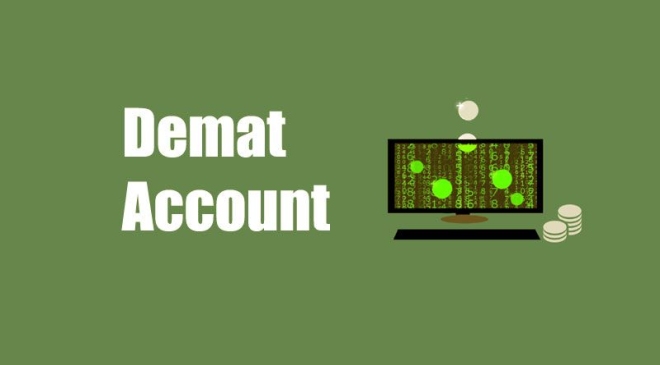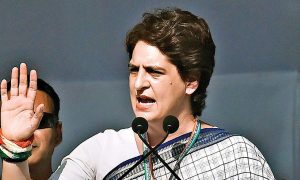Owning a demat account offers various advantages, providing investors with a range of options for diversifying their funds. They can invest in instruments like mutual funds, bonds, and exchange-traded funds (ETFs).
Read More: CIBIL: Applying for an unsecured loan? These are the credit score requirements
Investors also leverage demat accounts to build wealth by investing in fundamentally sound stocks for the long term. This approach enables them to benefit from capital appreciation, as well as additional perks such as dividends and bonus shares.
Moreover, in India, many brokers provide a 2-in-1 demat account, merging it with a trading account. This setup empowers investors to access derivative markets and engage in trading activities seamlessly.
In this article, we will explain how investors can utilise their demat accounts to invest in exchange-traded funds (ETFs).
What are ETFs?
Exchange-traded funds represent a type of mutual fund that typically mirrors an index or sector and is traded on a stock exchange, similar to individual stocks. While functioning similarly to regular mutual funds, ETFs require investors to have a demat account for transactions due to their stock market trading nature.
In essence, ETFs track indexes like the CNX Nifty or BSE Sensex. When purchasing shares/units of an ETF, investors are essentially acquiring shares/units of a portfolio mirroring the performance of its underlying index.
Unlike other index funds, ETFs aim to replicate rather than outperform their respective indexes, essentially mirroring the market rather than attempting to beat it.
In contrast to traditional mutual funds, ETFs trade like common stocks on stock exchanges, with their traded price fluctuating throughout the trading day. This price is influenced by the net asset value of the underlying stocks within the ETF.
ETFs typically offer higher daily liquidity and lower fees compared to mutual funds, making them an appealing option for individual investors.
One simple example of an ETF is the Nifty 50 ETF, which tracks the Nifty 50 index. When investors buy shares of this ETF, they are essentially buying a portion of the Nifty 50 index.
As the Nifty 50 index represents the performance of the top 50 companies listed on the National Stock Exchange of India, investing in the Nifty 50 ETF provides investors with exposure to the overall performance of these companies.
The following are the other popular ETFs:
Sensex ETF: Similar to the Nifty 50 ETF, this fund aims to replicate the performance of the Sensex, which represents the 30 largest and most actively traded stocks on the Bombay Stock Exchange (BSE).
Gold ETFs: Several ETFs in India track the price of gold, allowing investors to invest in gold without the need for physical storage. Examples include HDFC Gold ETF, SBI Gold ETF, and Axis Gold ETF.
Banking ETFs: These ETFs invest in stocks of banks and financial institutions listed on Indian stock exchanges. Examples include Nippon India ETF Bank, BeES, and SBI ETF Banking.
Sectoral ETFs: ETFs focused on specific sectors of the Indian economy, such as technology, energy, or infrastructure, provide investors with targeted exposure to these industries. Examples include the ICICI Prudential Bharat 22 ETF and Reliance ETF PSU Bank BeES.
Steps to invest in ETFs using a demat account
Research and Select ETFs: Begin by researching and identifying ETFs that align with your investment goals, risk tolerance, and financial objectives. Consider factors such as the ETF’s underlying assets, expense ratio, historical performance, and liquidity.
Open Trading Platform: Access your demat account through your preferred trading platform provided by your brokerage firm. Ensure that your demat account is linked to your trading account for seamless transactions.
Place an Order: Once you’ve selected the ETFs you wish to invest in, log in to your trading platform and navigate to the order placement section. Enter the ticker symbol or name of the ETF you want to buy into the order entry form.
Specify Quantity and Price: Specify the quantity of ETF units you wish to purchase and set the desired price if you’re using a limit order. Review the order details carefully to ensure accuracy before proceeding.
Confirm Order: After entering the necessary details, review the order summary to verify the transaction details, including the ETF name, quantity, price, and total investment amount. Once confirmed, submit the order.
Monitor Investment: After placing the order, monitor the status of your investment through your trading platform. Keep track of any updates, fluctuations in prices, and relevant market news that may impact your investment.
Benefits of investing in ETFs
Diversification: Similar to traditional mutual funds, ETFs consist of a basket of securities that provide investors exposure to a variety of assets, such as indices or sectors like Nifty, IT, banking, and more. However, it’s important to note that ETFs tracking gold may not offer the same level of diversification.
Real-time trading: Unlike mutual funds, ETFs trade in real-time on stock exchanges, allowing investors to buy or sell shares whenever they choose. In contrast, mutual fund transactions follow a T+2 settlement cycle, requiring two days for settlement.
Focused sector or index investment: ETFs typically track specific sectors, indices, or commodities like gold, providing investors with targeted exposure to those areas through a single, tradable fund.
Cost-effectiveness: Since ETFs aim to track an index rather than outperform it, they incur lower administrative costs compared to actively managed portfolios.
The administrative costs of ETFs are typically less than 0.20% per annum, significantly lower than the over 1% yearly cost of some actively managed mutual fund schemes. With lower expense ratios, ETFs entail fewer recurring costs that could diminish returns.
FAQs
What happens to the dividends received by the underlying stocks?
Dividends received by an ETF are usually reinvested back into the fund.
Are ETFs limited to stocks only?
No, ETFs cover a wide range of asset classes beyond stocks. Any asset class with a published index and sufficient liquidity for daily trading can be structured into an ETF.
This includes bonds, real estate, commodities, currencies, and multi-asset funds. For instance, in India, mutual funds offer gold ETFs, where the underlying investment is in physical gold.
How do gold ETFs work?
Gold ETFs represent physical gold bars with a purity of 99.5%. Their prices are listed on the websites of stock exchanges like BSE/NSE and can be traded through a stockbroker at any time. Unlike physical gold jewelry, gold ETFs can be bought and sold at the same price nationwide.
Who should consider investing in gold ETFs?
Gold ETFs are suitable for investors interested in gold investments but who prefer to avoid the hassles of storing physical gold or have concerns about gold purity. Additionally, investors seeking tax benefits may find gold ETFs attractive. Since there are no premiums or making charges, investors can save money, especially with substantial investments. Moreover, investors can start with purchases as low as one unit (equivalent to 1 gram).
Read More: PFRDA releases revised NPS charges for PoPs; here are the details
How do ETFs maintain liquidity?
ETFs maintain liquidity primarily through trading in the secondary market and secondarily through the creation/redemption process with the fund’s creation unit size. The liquidity of an ETF is essentially derived from the liquidity of the underlying shares, facilitated by the unique in-kind creation/redemption process.





































